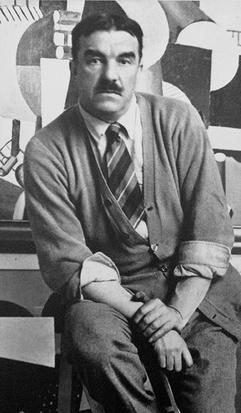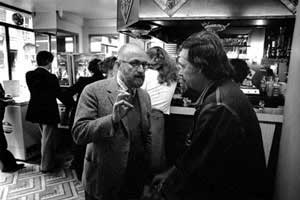Stalingrad is a former name of Volgograd, a city in Russia.

Joseph Fernand Henri Léger was a French painter, sculptor, and filmmaker. In his early works he created a personal form of cubism which he gradually modified into a more figurative, populist style. His boldly simplified treatment of modern subject matter has caused him to be regarded as a forerunner of pop art.

Silkeborg is a Danish town with a population of 51,805. Silkeborg is the seat of Silkeborg Municipality, with a population of 100,747 as of 2024.

COBRA or Cobra, often stylized as CoBrA, was a European avant-garde art group active from 1948 to 1951. The name was coined in 1948 by Christian Dotremont from the initials of the members' home countries' capital cities: Copenhagen (Co), Brussels (Br), Amsterdam (A).

Asger Oluf Jorn was a Danish painter, sculptor, ceramic artist, and author. He was a founding member of the avant-garde movement COBRA and the Situationist International. He was born in Vejrum, in the northwest corner of Jutland, Denmark, and baptized Asger Oluf Jørgensen.
The Scandinavian Institute of Comparative Vandalism is a non-profit cultural institute based in Denmark.

Pierre Alechinsky is a Belgian artist. He has lived and worked in France since 1951. His work is related to tachisme, abstract expressionism, and lyrical abstraction.
Jørgen Nash was a Danish artist, writer and central proponent of Situationism.

Jacqueline Beatrice de Jong was a Dutch painter, sculptor, and graphic artist.

Constant Anton Nieuwenhuys, better known as Constant, was a Dutch painter, sculptor, graphic artist, author and musician.
A cyclorama is a panoramic image on the inside of a cylindrical platform, designed to give viewers standing in the middle of the cylinder a 360° view, and also a building designed to show a panoramic image. The intended effect is to make viewers, surrounded by the panoramic image, feel as if they were standing in the midst of the place depicted in the image.
Adam Saks is a Danish painter who lives and works in Berlin.
Danish art is the visual arts produced in Denmark or by Danish artists. It goes back thousands of years with significant artifacts from the 2nd millennium BC, such as the Trundholm sun chariot. For many early periods, it is usually considered as part of the wider Nordic art of Scandinavia. Art from what is today Denmark forms part of the art of the Nordic Bronze Age, and then Norse and Viking art. Danish medieval painting is almost entirely known from church frescos such as those from the 16th-century artist known as the Elmelunde Master.

Museum Jorn, Silkeborg, is an art museum located by Gudenåen in Silkeborg, Denmark. The museum holds the collections that were developed by Asger Jorn (1914–1973) from the early 1950s until his death in 1973, since when they have doubled in extent.

James Edward Brewton was an American painter and printmaker who synthesized expressionism, graffiti and Pataphysics.

Aksel Jørgensen was a Danish painter and wood engraver. He is also remembered for his years as the director and professor at the Royal Danish Academy where he instructed many Danish illustrators.

Silkeborg Museum is a museum of Danish cultural history with official state recognition based in Silkeborg Municipality, Denmark. Museum Silkeborg is located at three different sites: Manor House (Hovedgården) and the Paper Mill Museum (Papirmuseet) in Silkeborg and Blicheregnen farm in the village of Thorning.

Johannes Holbek was a Danish painter and graphic artist.

Pierre Wemaëre was a French painter and tapestry designer.
Christian Eli Christensen was a Danish author and revolutionary syndicalist.













